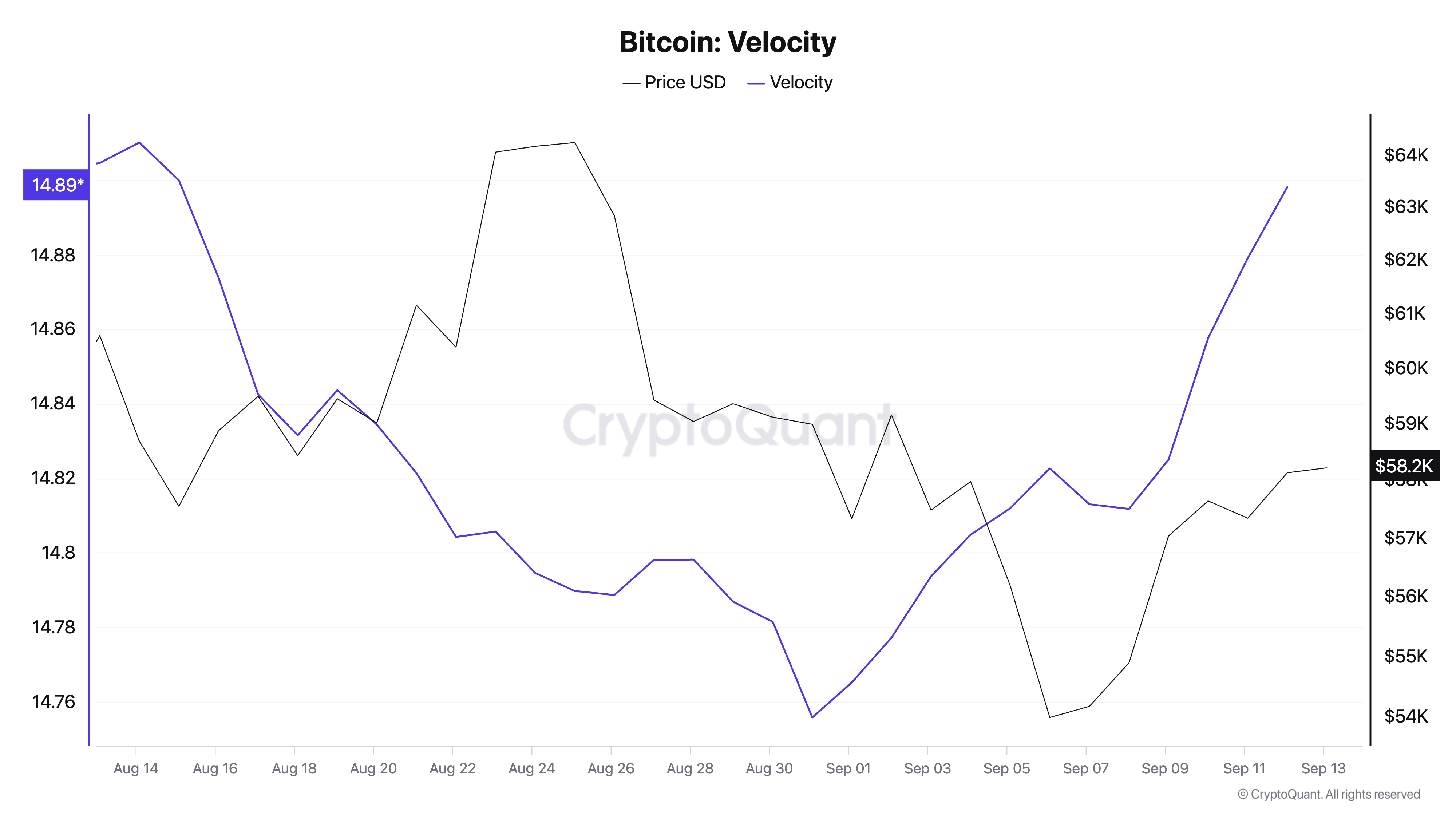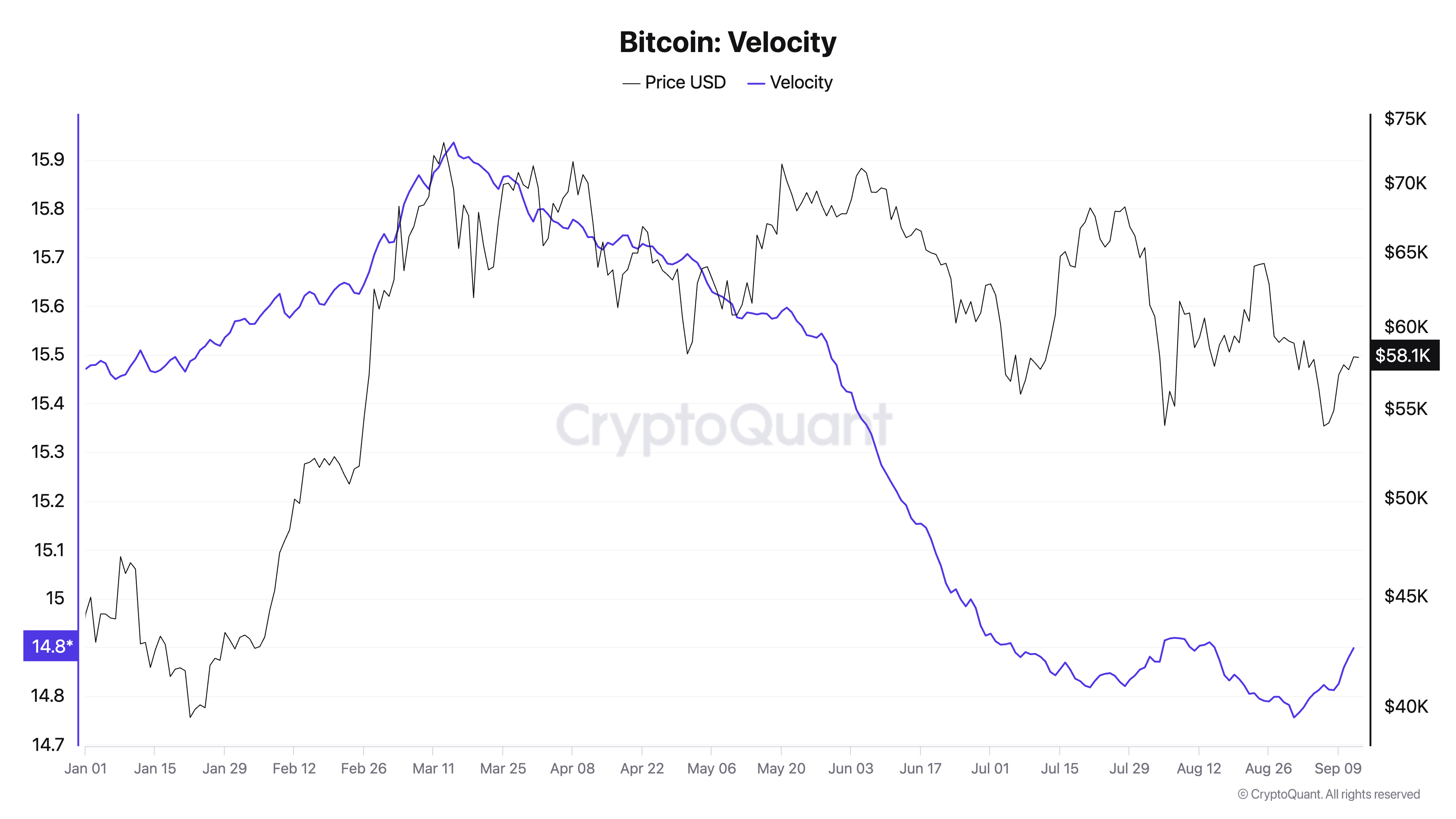Bitcoin velocity measures the velocity at which cash flow into out there. It’s calculated by dividing the estimated transaction quantity in 1 12 months – or the cumulative sum of tokens transferred – by the present Bitcoin provide. Pace is a crucial metric as a result of it signifies the extent of financial exercise within the community. A better velocity implies that the cash are shifting extra typically, indicating greater transaction exercise. In distinction, a decrease charge means the cash are idle, maybe reflecting a long-term holding mentality.
fromcrypto's the evaluation discovered that the velocity of Bitcoin noticed a big improve in September. This short-term improve follows an extended interval of decline that started in mid-March. To know the importance of this rise, we have to study each the latest peak and the long-term downtrend in velocity.

Bitcoin's velocity started to select up after months of regular decline on the finish of August 2024. This short-term surge suggests a renewed wave of market exercise. Whereas the rise shouldn’t be substantial in absolute numbers, it represents the primary notable improve in Bitcoin's velocity in months. This means that after a interval of consolidation, the market may very well be making ready for extra energetic participation.
Merchants, inspired by exterior developments and expectations of additional worth motion, started to shift their holdings once more. This may be attributable to quite a lot of components, but it surely normally boils right down to volatility – when costs transfer considerably, buying and selling exercise rises because the market races to revenue or reduce losses from worth swings, growing transaction quantity and velocity.
Nonetheless, this short-term improve is in stark distinction to the broader development. Traditionally, the velocity of Bitcoin has been steadily lowering. After reaching its peak in the course of the 2013 bull market, the speed has slowed considerably. Whereas there have been important spikes in 2017 and 2021 that matched Bitcoin's historic bull runs, the speed then rapidly declined and returned to decrease ranges. This long-term decline displays a big shift in the best way bitcoin is used out there.

Over time, Bitcoin has more and more been seen as a retailer of worth somewhat than a medium of trade. Lengthy-term holders are likely to accumulate bitcoins in anticipation of future appreciation, lowering the necessity for frequent transactions. As institutional adoption grows, so does the development of long-term accumulation.
Giant institutional gamers have a tendency to maneuver bitcoins in bigger however much less frequent transactions. This habits contributes to decrease total velocity as a result of establishments are typically much less fascinated about buying and selling steadily than retail individuals. This turned notably evident in 2024 with a surge in institutional demand from spot Bitcoin ETFs.
Whereas the rise in velocity we've seen since early September is important within the quick time period so far as the market is anxious, it's nonetheless minuscule in comparison with the final downtrend in 2024.

The present rise in velocity means that the market could also be coming into a extra energetic part after an extended interval of consolidation. This may very well be an early indicator of renewed curiosity and speculative exercise, probably signaling a bullish outlook.
Lengthy-term holders proceed to dominate the broader market, with HODLing and institutional involvement contributing to the general velocity decline. Except this latest rally is accompanied by sustained worth appreciation and broader market exercise, it’s unlikely to result in a long-term reversal of the downward velocity development.
The put up Bitcoin's First Important Pace Enhance Since March Reveals Buying and selling Surge appeared first on fromcrypto.
